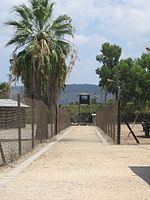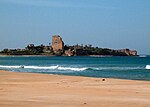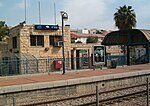Le Destroit
12th-century establishments in the Kingdom of JerusalemCastles and fortifications of the Kingdom of JerusalemCastles and fortifications of the Knights TemplarCastles in IsraelCrusader castles ... and 2 more
Disestablishments in the Kingdom of JerusalemPrincipality of Galilee

Le Destroit (for alternative names see below) is a ruined medieval fortified road station, built by the Templars of the Crusader Kingdom of Jerusalem in the early 12th century CE, located on the Mediterranean shore near a site where they later built the Chateau Pelerin castle, today close to the modern town of Atlit, Israel.
Excerpt from the Wikipedia article Le Destroit (License: CC BY-SA 3.0, Authors, Images).Le Destroit
Horvat Karo, Hof HaCarmel Regional Council
Geographical coordinates (GPS) Address External links Nearby Places Show on map
Geographical coordinates (GPS)
| Latitude | Longitude |
|---|---|
| N 32.707777777778 ° | E 34.946111111111 ° |
Address
מבצר דטרוא
Horvat Karo
Hof HaCarmel Regional Council
Haifa District, Israel
Open on Google Maps











